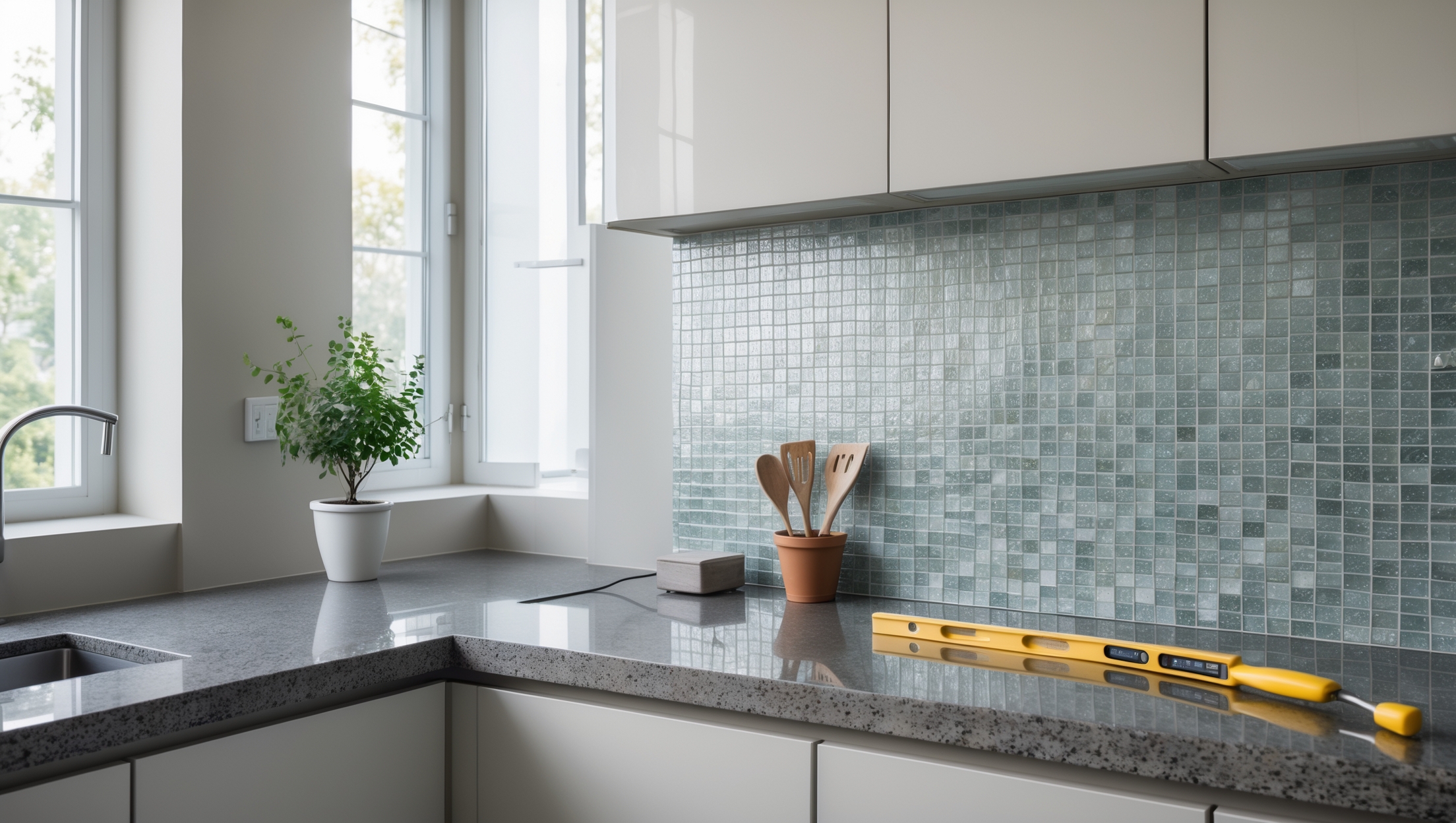Introduction: Why Power Tool Safety Should Be Your First Priority
Home improvement projects offer the satisfaction of hands-on accomplishment and the joy of transforming your living space. But with the rise of DIY culture and easy access to powerful tools, it’s crucial to remember that safety must always come first. Every year, thousands of homeowners experience injuries—some minor, some severe—while working on projects with power tools. Many of these accidents are entirely preventable with a robust safety routine. Whether you’re assembling furniture, remodeling a room, or tackling outdoor repairs, using power tools safely is non-negotiable. This comprehensive checklist is designed to help you create a safer work environment, avoid common mistakes, and ensure every project ends with pride—not a trip to the emergency room. We’ll cover essential preparations, equipment checks, personal protective gear, workspace setup, tool-specific precautions, and crucial maintenance practices. Even if you’re a seasoned DIYer, you’ll find practical insights to reinforce good habits and protect yourself, your family, and your home.
Understanding the Risks: Common Power Tool Accidents at Home
Lacerations and Cuts
From circular saws to utility knives, sharp blades are a leading cause of injuries. These can range from minor nicks to deep gashes requiring stitches or worse. Most accidents happen due to inattention, dull blades, or improper handling.
Eye Injuries
Flying debris, sawdust, or metal shavings can cause serious eye damage. Even a momentary lapse in wearing safety glasses can have lifelong consequences.
Electrocution
Improper use of electric tools, damaged cords, or working in wet conditions raises the risk of electrical shock. Extension cord misuse is a frequent culprit.
Hearing Loss
Repeated exposure to loud tools like saws, drills, and sanders can cause permanent hearing loss if proper hearing protection isn’t used.
Respiratory Problems
Wood dust, paint fumes, and particles from cutting tile or drywall can be harmful when inhaled. Lack of proper ventilation and masks contribute to both acute and chronic issues.
Other Injuries
Pinched fingers, bruises, and even burns from hot tool components are common, especially with multitasking or fatigue.
Pre-Project Preparation: Setting Up for Safety
Read the Manual—Every Time
Even if you’ve used a tool before, read the instruction manual for every new power tool. Manufacturers often update safety features or operational procedures. Manuals include essential information about correct operation, maintenance schedules, and troubleshooting.
Inspect Tools Before Use
- Check cords and plugs for fraying or damage.
- Ensure all guards, shields, and safety features are present and functional.
- Look for loose screws, missing parts, or signs of wear.
- Test moving parts for smooth operation before starting any project.
Plan Your Workflow
Lay out the sequence of tasks before you start. Identify steps that require switching tools, handling materials, or repositioning yourself. This helps you avoid rushing and reduces the temptation to cut corners.
Personal Protective Equipment (PPE): What You Need—And Why
- Safety Glasses or Goggles: ANSI-rated eyewear guards against flying debris.
- Hearing Protection: Foam earplugs or earmuffs help prevent hearing damage from loud tools.
- Respirators or Dust Masks: Choose a mask rated for the dust or fumes expected (e.g., N95 for fine dust, cartridge respirator for solvents).
- Work Gloves: Cut-resistant gloves protect hands without sacrificing dexterity.
- Non-Slip Footwear: Closed-toe shoes with good traction help prevent slips and dropped-object injuries.
- Appropriate Clothing: Wear fitted clothing; avoid loose sleeves, jewelry, or anything that could get caught in moving parts.
Setting Up a Safe Workspace
Lighting
Ensure your workspace is brightly and evenly lit. Shadows can obscure hazards or cause you to misjudge distances. Portable LED work lights are a smart investment for poorly lit areas like basements or garages.
Ventilation
When working with paints, adhesives, or materials that generate dust, open windows and use fans to direct fumes outside. For larger projects, consider a portable air filtration system.
Organization
- Keep tools and materials organized. Clutter increases trip hazards and makes it harder to find the right tool quickly.
- Store sharp or heavy tools securely when not in use.
Electrical Safety
- Avoid daisy-chaining extension cords.
- Use heavy-duty, grounded extension cords rated for your tools’ power requirements.
- Keep all cords away from water and high-traffic areas.
Power Tool Safety Checklist: Step by Step
- Read and understand the tool’s manual.
- Inspect the tool for damage or missing parts.
- Check safety guards and emergency shut-off mechanisms.
- Wear all recommended PPE.
- Ensure your work area is clean, well-lit, and ventilated.
- Secure your materials with clamps or vices; never hold pieces with your hand alone.
- Double-check tool settings before turning on (e.g., blade depth, drill speed).
- Keep hands, hair, and clothing clear of moving parts.
- Never bypass or disable safety features.
- Unplug tools before changing blades, bits, or making adjustments.
- Do not overreach; maintain stable footing at all times.
- Stay focused—never use power tools under the influence of alcohol, medication, or when fatigued.
- Keep children and pets out of the work area.
- Clean up dust and debris promptly to prevent fire hazards.
Tool-Specific Safety Tips
Circular Saws
- Allow the blade to reach full speed before making contact with material.
- Never disable the blade guard.
- Always cut on a stable surface with proper support.
Power Drills
- Secure the bit tightly; remove the chuck key before use.
- Start drilling at slow speed to prevent wandering.
- Use the correct bit for your material.
Angle Grinders
- Check that the guard is positioned between you and the wheel.
- Never use a cracked or worn disc.
- Allow the tool to stop spinning before setting it down.
Sanders
- Wear a dust mask and use dust collection bags or shop vacuums.
- Keep fingers away from moving belts or pads.
- Do not apply excessive pressure; let the sander do the work.
Table Saws
- Use a push stick for narrow cuts.
- Never remove cut pieces or debris while the blade is spinning.
- Install anti-kickback pawls and riving knives for added safety.
Maintenance Essentials: Keeping Tools Safe and Reliable
Regular Cleaning
After each use, clear dust and debris from vents, blades, and moving parts. Accumulated buildup can cause overheating, jams, or even fires.
Blade and Bit Care
- Sharpen or replace dull blades and bits promptly. Dull edges are more likely to bind, kick back, or slip.
- Always use the correct type and size for your tool and material.
Lubrication and Adjustment
Follow the manufacturer’s recommendations for lubricating moving parts. This reduces friction, prevents wear, and ensures smoother operation.
Battery and Cord Care
- Inspect cords for nicks, cracks, or fraying. Replace damaged cords immediately.
- Store batteries in a cool, dry place and recharge only with approved chargers.
Storage
Store tools in cases or on racks, away from moisture and extreme temperatures. This prolongs their lifespan and prevents accidental injuries when reaching for tools.
Emergency Preparedness: What to Do If Something Goes Wrong
First Aid Kit
Always keep a well-stocked first aid kit in your work area. Include bandages, antiseptic wipes, burn cream, and eye wash solution.
Emergency Contacts
Keep a list of emergency contact numbers—local hospital, poison control, and a trusted friend—posted in your workspace and saved on your phone.
Fire Extinguisher
Have a fire extinguisher rated for electrical and chemical fires nearby. Know how to use it before an emergency arises.
If an Accident Occurs
- Stop work immediately and assess the situation.
- For severe injuries, call emergency services without delay.
- For eye injuries, rinse with clean water and seek medical attention.
- Report electrical shocks to a professional, even if you feel fine.
Teaching Safety to Family Members
If you share your workspace or tools with family, it’s vital to teach children and inexperienced users about power tool safety. Demonstrate proper use, explain the reasons for each safety precaution, and supervise until you’re confident in their skills. Storing tools out of reach and locking cabinets when not in use is an effective way to prevent accidental injuries.
Conclusion: Make Safety a Habit—Not an Afterthought
Every successful home improvement project begins with a commitment to safety. Power tools make our lives easier and our homes more beautiful, but they demand respect and vigilance. By following this comprehensive safety checklist, you’re not just protecting yourself—you’re setting an example for everyone in your home. Remember, most accidents happen in a split second, often when we’re distracted, rushing, or overconfident. Take the time to prepare, wear the right gear, and never skip safety steps, no matter how small the job seems. With regular maintenance, careful planning, and a proactive mindset, you can enjoy the rewards of DIY projects without unnecessary risks. Make safety your first and last step in every project, and you’ll keep your home improvement journey both productive and injury-free. Stay smart, stay safe, and happy building!



